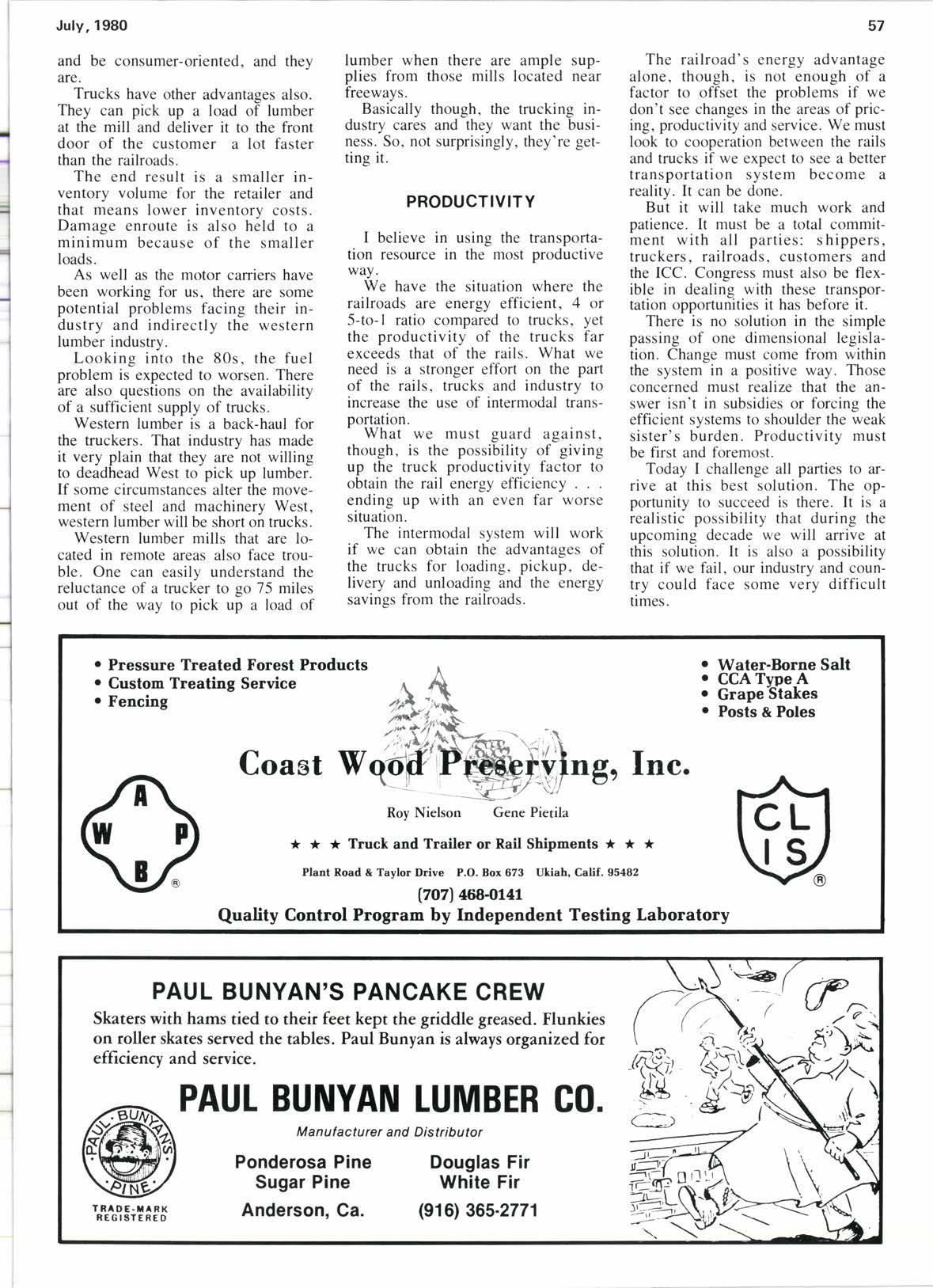
2 minute read
Cedro: the volatile Latin
Cedro, Spanish cedar, Cedrela spp., is found from Mexico to the West Indies and in all of the Latin American countries except Chile.
Because it is a genus of seven species, there has been much confusion. In 1960, a study published at the Field Museum of Natural History clarified the 37 species plus a number of varieties and forms. The most important and widespread species are Cedrela odorata, also known as Cedrela mexicana, C. angusti,folia, and C. fissilis.
Cedro has an average specific gravity of 0.40 in green volume and ovendry weight. According to mechanical tests made at Yale, it is like Central American mahogany in most properties except hardness and compression perpendicular to grain where mahogany is superior. Weight is about 26 lbs. per cubic foot.
The freshly cut heartwood is pinkish to reddish brown. When exposed, it becomes red or dark reddish brown, sometimes with a purple cast. The color is said to vary with location. The wood grown on the driest sites is darker and prized by local craftsmen.
The wood ranges from diffuse porous to decidedly ring-porous which produces a distinct growth ring pattern on flatsawn surfaces or rotary-cut veneer. The grain is generally straight although some interlocking occurs. Luster is medium to high and varies with the depth of color. The lighter wood has the lowest luster. The wood is coarser in texture than mahogany. The heartwood has the characteristic cedar odor.
Air drying or kiln drying methods work well for seasoning. Endracking in the sun, a method in common use in the tropics, results in little degrading. Shrinkage is low and uniform. Inservice movement of unfinished wood is about l.2olo radially and 1.50/o tangentially.
A gum-like substance with a volatile aromatic oil is found in cedro. It can stain materials in close contact and may .cause boards to* become glued together. This volatile content can be reduced by kiln drying the unsurfaced stock to a moisture content of 6 to 8o/o and then heating at 200"F. for 8 to 17
Story at a Glance
Cedro tests out much like mahogany. characteristic cedar odor. . . Yolatile content can cause problems. .. works easily with good results.
hours at a relative humidity of 600/0. This will bring the oils and gums to the surface where they can be removed by planing.
Wood dried by the conventional methods is not recommended for use in closed cases for clocks or precision instruments because the volatiles condense on the metal parts, hampering the mechanism.
Importers of cedro believe that wood from Nicaragua, Costa Rica, and the Amazon area have more exudate. Wood from Mexico, Belize, and Guatemala is preferred because it rarely has exudation.
Decay resistance varies in the heartwood depending on density, with that in the lower range rated as non-durable to moderate. Wood of average and better characteristics ranges from resistant to very resistant with resistance to dry-wood termite attack surpassing that of mahogany. The sapwood is vulnerable to powder-post beetle attack.
One of the classic timbers of Latin America, cedro works easily with both hand and power tools with good results in all machining operations. The logs can be veneered without heating. The veneer dries exceptionally well and has good gluing properties.
In the medium price range, it is used for cigar boxes, lead pencils, boat building and pattern work, furniture, and doors. Sliced or rotary veneer is plentiful and lumber is classified as available.
Custom Remanufacturing
Prompt service, quality, and a desire to please is our business. Call us for your custom milling requirements.
'z Kiln drying ,z Fingerjointing ,z Shaping
,, Resawing ,z Surfacing (siding,' 'z Trucking
,,X-chopping decking & paneling) ,z Car Loading
,z Ripping ,z Boring
,/ Dry Storage










